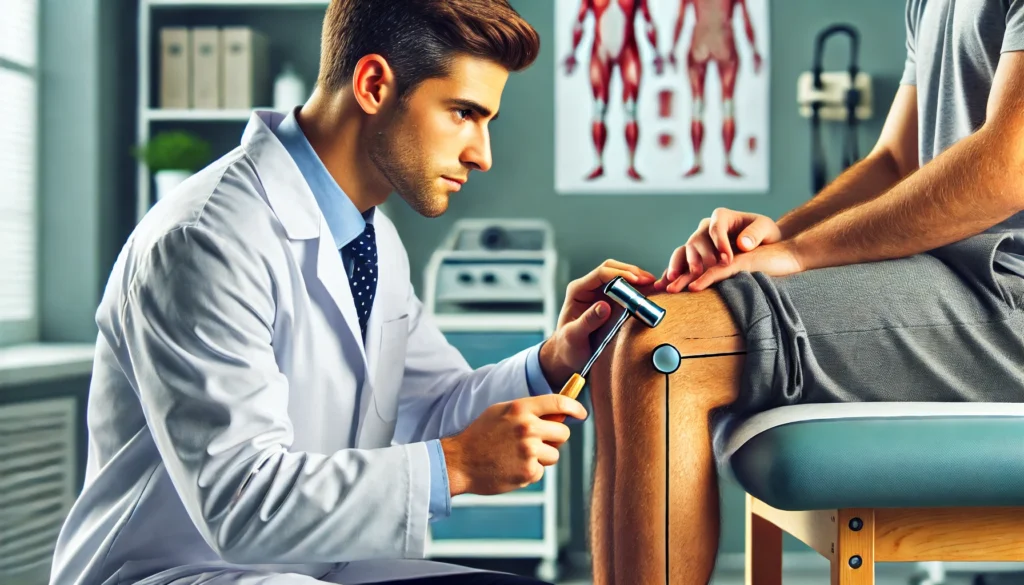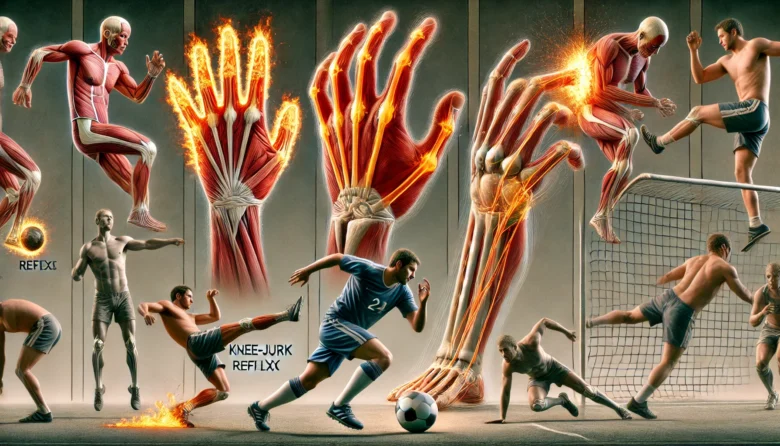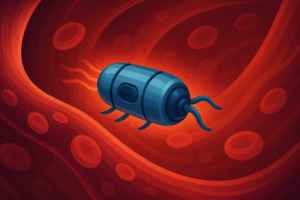Have you ever touched a hot stove and instantly pulled your hand away without even thinking? Or jumped at a sudden loud noise? These automatic actions are examples of human reflexes and responses—an incredible aspect of our nervous system that keeps us safe and helps us react to the world around us. In this blog, we’ll explore “The Science Behind Human Reflexes and Responses,” uncovering how these fascinating mechanisms work, why they happen so quickly, and their vital role in our everyday activities.
What Are Human Reflexes?
Reflexes are involuntary, almost instantaneous movements in response to a stimulus. They are automatic, meaning they don’t require conscious thought or decision-making. Reflexes are designed to protect the body from harm, ensuring a quick reaction to potentially dangerous situations.
One of the most well-known examples is the knee-jerk reaction, commonly referred to as the patellar reflex. When a doctor taps the tendon below your kneecap, your leg kicks out involuntarily. This reflex happens because the tap stretches the tendon, which in turn stretches the muscle in your thigh. This stretch is detected by sensory neurons (nerve cells), which transmit a signal straight to the spinal cord. The spinal cord then relays a command back to the muscle to contract, resulting in the knee-jerk response—all without the brain getting involved. This is an example of a simple reflex arc.

Types of Reflexes
Reflexes can be categorized into different types based on where and how they occur:
Simple Reflexes: These involve a direct pathway between sensory neurons and motor neurons (nerve cells that control muscles). The knee-jerk reflex is a prime example of a simple reflex.
Complex Reflexes: These involve multiple synapses (connections between neurons) and may include signals being sent to the brain. For instance, when you touch something hot, a complex reflex causes you to pull your hand away and, at the same time, feel pain.
Autonomic Reflexes: These control involuntary functions in the body, such as heart rate, digestion, and blood pressure. For example, when you stand up quickly, an autonomic reflex adjusts your blood pressure to prevent you from feeling dizzy.
The Science Behind Reflexes
Reflexes are governed by the nervous system, particularly the spinal cord and brainstem. The process begins with a stimulus—a change in the environment that is detected by sensory receptors. These receptors send signals via sensory neurons to the spinal cord or brainstem, where the information is processed. If a reflex action is required, the spinal cord or brainstem sends a signal back through motor neurons to the appropriate muscles, triggering a response.
The speed at which reflexes occur is remarkable. In some cases, like the knee-jerk reflex, the entire process happens in just milliseconds. This speed is crucial for survival, as it allows us to react to dangers almost instantly.
Interestingly, reflexes can be modified or suppressed by the brain. For example, if you know that a doctor is about to test your knee-jerk reflex, you might consciously try to prevent your leg from kicking out. This ability to control reflexes shows how the brain can influence even automatic processes.
Case Study: The Startle Reflex
One of the most common and recognizable reflexes is the startle reflex, which occurs when we suddenly hear a loud noise or see something unexpected. The startle reflex acts as a defense mechanism, readying the body for possible threats. When triggered, it causes a quick movement of the body, often accompanied by a rapid heartbeat and an increase in adrenaline.
The startle reflex is so ingrained in our biology that it can be seen in infants, who display the Moro reflex—throwing their arms out and pulling them back in when startled. This reflex is thought to be an evolutionary adaptation to help babies cling to their mothers.
As we grow older, the startle reflex remains with us, though it may become less pronounced. The reflex is still an important part of our body’s defense system, helping us stay alert and ready to respond to sudden threats.
Reflexes in Sports and Everyday Life
Reflexes play a crucial role in sports and other physical activities. Athletes often rely on well-developed reflexes to perform at their best. For instance, a tennis player returning a fast serve or a goalkeeper saving a penalty in soccer depends on quick reflexes to react to the ball’s movement.
Training can enhance reflexes, making them faster and more precise. This is why athletes practice repeatedly, as it helps build muscle memory and improve their reflexive responses to specific situations.
In everyday life, reflexes are constantly at work, often without us even realizing it. Whether it’s catching a falling object, swatting away a fly, or braking suddenly to avoid a collision while driving, reflexes are an essential part of how we interact with the world.
The Role of Reflexes in Medical Diagnosis
Reflexes are not only important for survival and daily activities but also serve as valuable tools in medical diagnosis. Reflex tests are frequently conducted by doctors during neurological exams to evaluate the condition of the nervous system. Abnormal reflexes can indicate underlying conditions, such as nerve damage, brain injury, or neurological disorders.
For example, the Babinski reflex, where the big toe extends upward when the sole of the foot is stroked, is normal in infants but may indicate neurological issues in adults. Similarly, a lack of response in the knee-jerk reflex could suggest damage to the spinal cord or nerves.
Understanding reflexes helps doctors diagnose and treat various medical conditions, highlighting their importance beyond just our everyday experiences.
Conclusion
Human reflexes and responses are remarkable mechanisms that protect us, keep us safe, and enable us to interact with our environment. From the simple knee-jerk reflex to the complex startle reflex, these automatic actions demonstrate the incredible efficiency and sophistication of the nervous system. As we continue to learn more about “The Science Behind Human Reflexes and Responses,” we gain a deeper appreciation for the ways our bodies are designed to respond to the world around us. Whether in sports, daily life, or medical practice, reflexes are essential to our survival and well-being.
Author’s Note
Reflexes are like our body’s built-in safety net, always ready to catch us when we need it most. It’s amazing how something so automatic can be so vital to our lives.
G.C., Ecosociosphere contributor.




